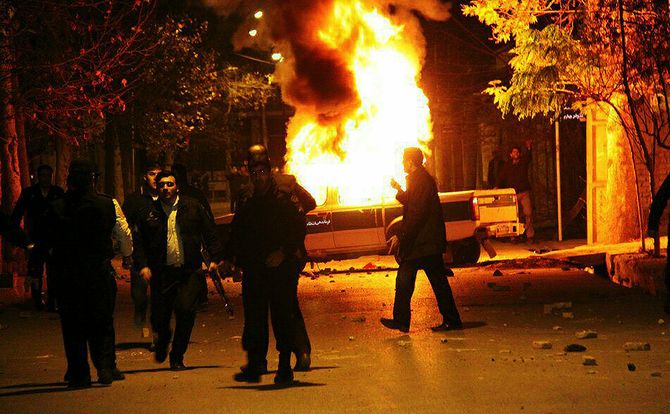The Middle East: Balance in instability
An uneasy truce between the major powers in the Middle East has come to an end with the defeat of Islamic State. Don’t expect Iran’s internal problems to provide a respite.

The overarching political picture in the Middle East over the past few years has been the rivalry between two regional powers: Iran and Saudi Arabia. The former, a Shia-dominated regime, has ambitions to reinstall Persian hegemony in the area, while the Saudis lead a Sunni coalition – joined by Israel – resisting Iran’s efforts.
Geopolitically, Iran is supported by Russia, while the United States backs the Sunni-Israeli coalition led by Saudi Arabia. Russia has followed a consistent policy of supporting President Bashar al-Assad’s government in Syria, together with Iran, while at the same time cultivating improved relationships with the Saudis and Israelis.
The U.S. position is changing. Former President Barack Obama charted an ambiguous course that sought a new opening with Tehran while actively supporting the anti-Assad rebels in Syria, who were fighting against Iranian forces. But the U.S.-brokered agreements with Iran in 2015-2016 (especially the Joint Comprehensive Plan of Action to curb the Iranian nuclear program) only increased Saudi and Israeli distrust toward Washington and in the end helped Russia. The new U.S. administration has reversed course and taken a clear anti-Iranian position.
Daesh, also known as Islamic State (ISIS), acted as a unifying force, since it constituted a threat to all sides. While it held important territories, an uneasy truce prevailed. Now this common enemy is deemed to be defeated militarily, although it is likely to reappear in a different form.
With ISIS in retreat and the Assad regime back in control in Syria, opening the vital overland route from Iran through neutralized Iraq to Damascus and the Mediterranean, everything seemed to be going Tehran’s way. Hezbollah, the Iran-sponsored political party and militia that dominates southern Lebanon, had helped President Assad win the Syrian civil war, and now expects repayment in the form of Iranian bases and supply routes through Syria. This poses a direct threat to Israel, and indirectly to Saudi Arabia and the U.S.-backed Sunni coalition.
False spring
Iran had a major weakness, however – its broken economy. After sharp increases in food prices, mass riots broke out in the country’s second-largest city, Mashhad, and then began to spread. The protests posed a direct challenge to the regime of Supreme Leader Ayatollah Ali Khamenei and President Hassan Rouhani. Iran’s domestic problems have begun to jeopardize its expansive foreign policy.
The so-called Arab Spring in 2011-2012 was also triggered by an increase of food prices in Tunisia and Egypt. This was followed by mass movements demanding more freedom. They proved largely unsuccessful. Existing regimes were overthrown in Tunisia, Egypt, Libya and Yemen, but in the case of the latter three countries, the immediate results were even worse.
Iran’s regime is strong and determined, and it got help from an unexpected quarter.
This will not happen in Iran. The regime is strong and determined, and it got help from an unexpected quarter. Both the U.S. and Israel expressed official support for the demonstrators – endorsements that were made with an eye to domestic electorates, not their consequences for foreign policy.
A more helpful approach would be more trade and negotiations with Tehran. Lip service does not help the desperate Iranian people. It only strengthens the regime by letting it blame America and Israel for the country’s economic problems.
If the Obama administration failed through wavering and fickleness, President Donald Trump’s could spoil its early success by a sense of premature triumph.
The present balance of power in the Middle East is based on constant war and social unrest generated by the two contending sides. The civil wars in Syria and Yemen might spill over at any moment into Lebanon, Iraq remains a fragile structure, and Jordan’s powers of resistance depend heavily on the strength of its monarchy.
The authorities in Tehran will ride out the current crisis. Iranian policies and Russian diplomacy may yet prove superior in this extremely volatile region.
